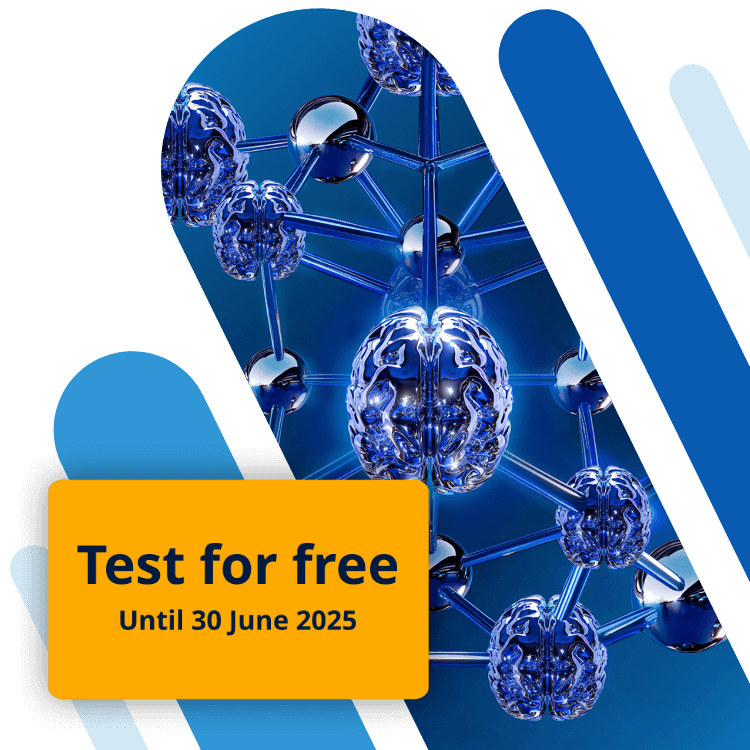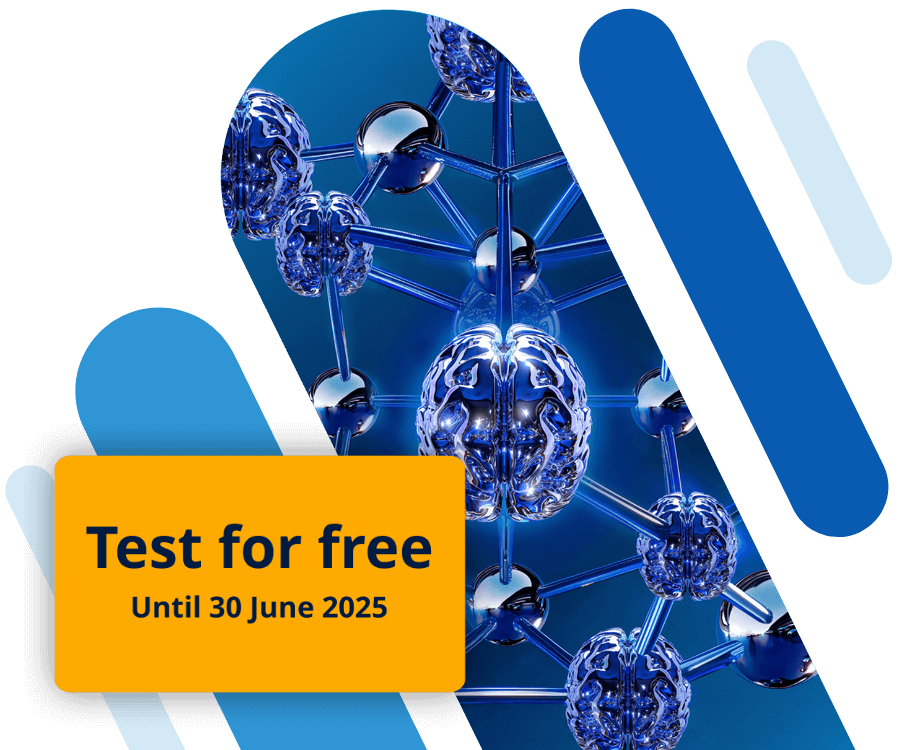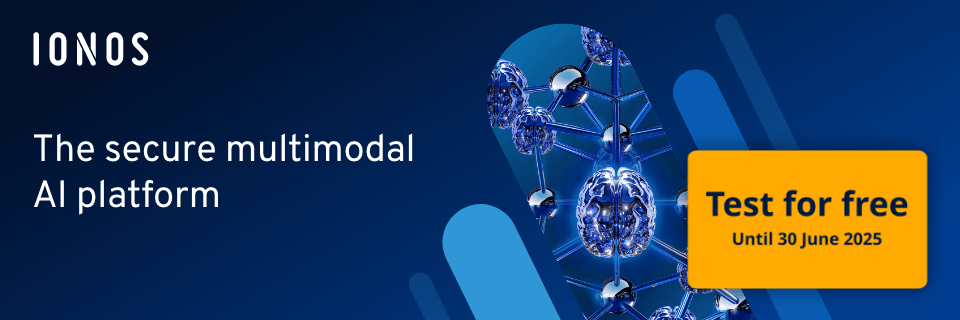How does AI image recognition work?
AI image recognition is a technology that uses artificial intelligence (AI) to identify, analyse and categorise objects, people, text and activities in images. We’ll explain exactly how AI image recognition works and what areas of application there are.
Image recognition is an area of artificial intelligence that already offers a wide range of possible applications for very different areas. For example, objects such as plants can be identified or you can search for products on the internet using photos. AI can also recognise people and then search for suitable profiles on social media. This is based on image recognition, which we’ll explain in more detail in this article.
What is image recognition and how does it work?
Image recognition refers to the ability of computers to automatically recognise objects and people, as well as text and other elements in images and videos, and to classify them based on underlying training models. As a result, the AI knows, for example, that a cat is a cat. In the field of artificial intelligence, the basis for the analysis is provided by machine learning, which can be used to train AI models to recognise and classify different data.
The AI generally works as follows:
- Collection of data: AI requires multiple inputs in the form of image data. These images are often categorised in advance so that the system learns patterns and recognises them later.
- Pre-processing: In order to train the system as well as possible, the images are prepared, for example, by adjusting the size and colours of the image data or removing effects.
- Extraction of features: In the next step, the system extracts relevant characteristics, known as features, from the image data. These include, for example, shapes, edges or colours.
- Model training: The processed data is then used to train a neural network. The aim here is for the model to learn to assign the extracted features to specific categories.
- Classification: Once the system has been trained, the model can analyse new, unknown images. Based on this and the learned patterns, objects or people are now recognised and assigned to categories.
- Fine-tuning and use: Later on, the model is refined more and more during use. This allows more precise adjustments to be made for the desired area of application, for example in the field of medical diagnostics, where scans from radiology are examined.
- Get online faster with AI tools
- Fast-track growth with AI marketing
- Save time, maximise results
Which application areas are the most important in the field of AI image recognition?
AI image recognition is now used in many industries and everyday use cases — often without consumers being directly aware of it. The most important areas include:
- Healthcare: In a field where accurate analysis of disease patterns or causes is crucial, AI image recognition can assist in making medical diagnoses. This is used in radiology, for example, to analyse X-rays or MRI scans.
- Security and surveillance: When it comes to security technology, AI is used to monitor public places. For example, AI uses facial recognition at airports to scan whether people classified as criminals or wanted persons are present in the flight area. AI image recognition can also be used to restrict access to buildings.
- Mobility: Autonomous driving would not be possible without AI-supported image recognition. AI recognises key factors such as traffic signs, other vehicles, people on the road and obstacles, and uses this information to steer the vehicle. This is ensured by the fact that cameras and other sensors constantly provide input that must be processed in real time for a smooth drive.
- Industry: Image recognition is used for quality control in the production of goods and parts. This allows defective goods or parts to be detected and removed at an early stage in the production process. Analyses are possible at a level of detail that is sometimes difficult for the human eye to see.
- Agriculture: In this area, image recognition using AI helps to identify the degree of maturity of plants, nutrient requirements or signs of pest infestation. Agricultural businesses often use drones for this purpose, which can cover large areas without moving other machines and thus contributing to soil compaction, for example.
- Retail: Here, artificial intelligence helps to make ordering goods more efficient, for example, by recognising products that are running low and automatically triggering new orders. Some retailers also use AI to register products that have been selected, so that an automatic booking process is triggered at the end of the purchase. This eliminates checkout times and makes the shopping experience more efficient.
What are the opportunities and risks of AI image recognition?
Image recognition ensures more efficient processes in many areas, as AI takes on many tasks that humans and machines can only perform with difficulty or inadequately. In addition to the opportunities, however, there are also risks associated with the use of AI. These relate in particular to the data basis and the training of artificial intelligence, as these determine the quality of the analyses and later the results.
Opportunities for image recognition
- Greater efficiency and better accuracy: The speed of analysis and the precision of the evaluated data can speed up processes and improve results, as manual evaluation takes longer and can be subject to human error.
- Innovative strength and new process stages: The use of AI enables new technologies such as autonomous driving to be widely used. Image recognition can also be used to automate key steps in manufacturing processes or agricultural production.
- Personalised customer experiences: Image recognition through AI can individualise the shopping process offline and online, not only improving the customer experience, but also serving customer needs more accurately, resulting in more sales.
- Improved safety environments: In different locations, AI can react faster and more accurately to changes in public spaces, ensuring safer infrastructure at key transportation hubs or public places.
Risks of AI image recognition
- Data protection and privacy: AI can improve public safety, however, privacy is often invaded by as personal data is collected and analysed — sometimes without the knowledge or consent of the individuals concerned. This information can fall into the wrong hands and be misused for criminal purposes.
- Discrimination and training bias: AI systems always analyse new data on the basis of the data with which they were trained. For example, if training is predominantly carried out with light-skinned people, this can have a negative impact on dark-skinned people. This can lead to problems when accessing security-relevant areas, for example.
- Lack of transparency: AI image recognition systems are complex, and the underlying training is difficult to understand. This can mean that decisions based on the results of the systems are not transparent. Decisions in the areas of law enforcement can therefore produce critical results under certain circumstances.
- Loss of human skills: The more AI and AI image recognition replace human skills, the greater the risk of neglecting key skills. This can lead to a loss of human (specialist) knowledge, for example in autonomous driving or medical diagnosis.
- Vulnerability to misuse: Where large volumes of data are stored and analysed, there are potential entry points for misuse by cybercriminals. For example, they could exploit AI image recognition to track individuals, or manipulate or completely disable security systems.
Conclusion: AI image recognition must be used responsibly
The opportunities arising from image recognition are huge across all industries and offer considerable optimisation potential for a wide range of areas. However, due to the associated risks, it’s important that the systems are used with the highest security standards in order to prevent misuse and, at the same time, comply with ethical standards. Transparency and diversification of the database must also be taken into account when training AI. This will ensure that the technology brings more benefit than harm in the long run.



